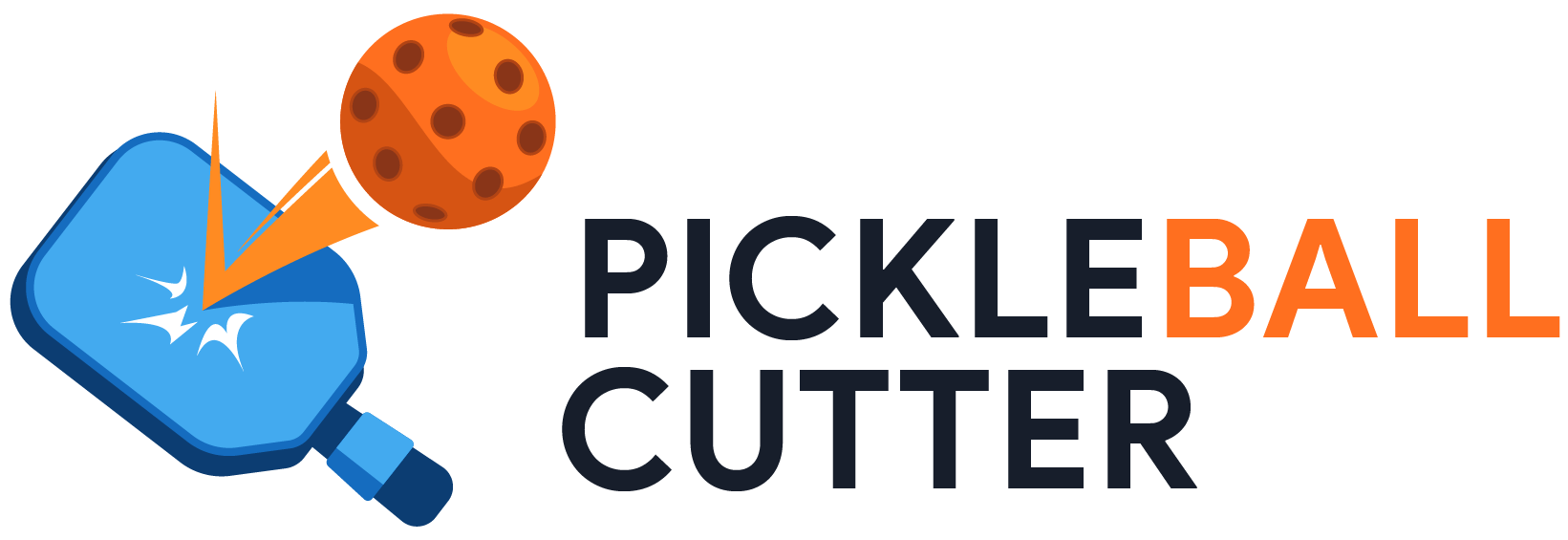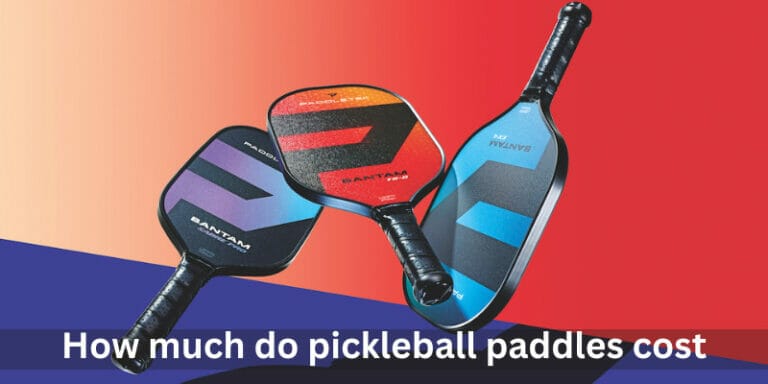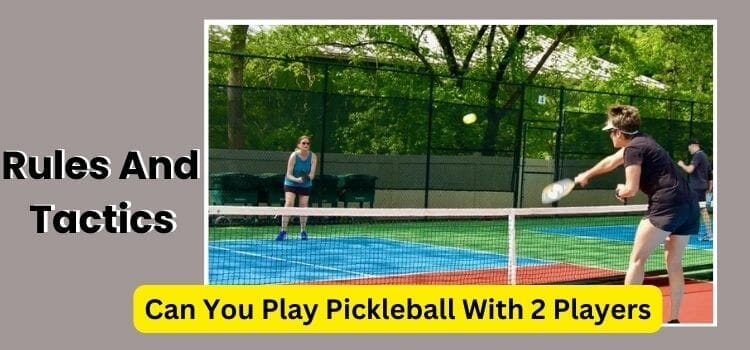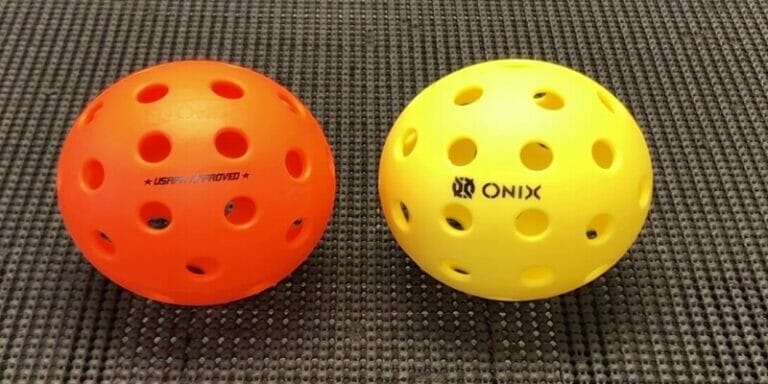Can You Slice Serve In Pickleball
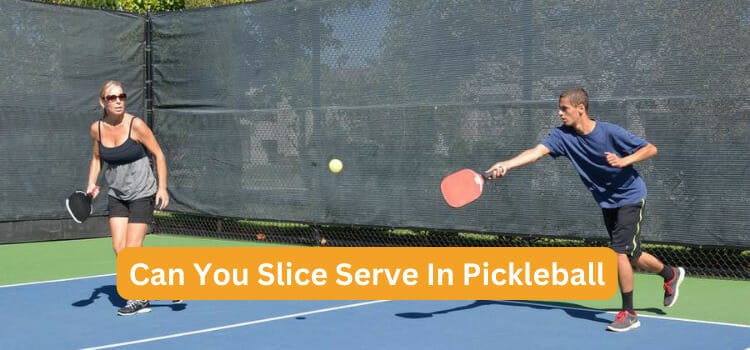
Key Takeaway:
- Slice serving is allowed in pickleball: Unlike some other paddle sports, pickleball allows players to use slice serves, which create sidespin on the ball for a challenging return.
- Executing a slice serve requires proper technique: To execute a slice serve in pickleball, players need to position their grip correctly, stay low, and use a smooth, sweeping motion to create a spin on the ball.
- Slice serving can give players an advantage in the game: Slice serving can force opponents to hit the ball from a difficult position, allowing for deeper shots and lengthier return distances. Additionally, players can aim for their opponent’s weaknesses, such as their backhand, to gain an advantage.
Pickleball Serving Basics
As a Pickleball enthusiast, understanding the serving basics is crucial to gaining an upper hand in the game. Knowing the Pickleball serving rules and the technique of slice serving in Pickleball can transform your gameplay instantly.
The Pickleball serving rules outline the specific criteria that must be met to execute a valid serve, while the slice serve is a strategic approach that involves spinning the ball to land in an ideal spot. With these two elements under your belt, you can pave the way for success in Pickleball matches.
Pickleball Serving Rules
Serving rules are crucial for any player in pickleball to perform well on the court. Aiming to provide an exceptional pickleball game experience, various serving rules have been put in place that all players must adhere to.
To execute a perfect pickleball serve, players need to follow these three simple steps: firstly, the ball must be below the naval level while serving and an upward arc must be applied while hitting the ball.
- Players should avoid throwing the ball downwards while serving as it can result in a penalty.
- Last but not least, bounce serves are allowed but should be used wisely.
It is essential to note that creating sidespin on the ball to achieve a challenging return is known as slice serving. To execute it flawlessly, grip and positioning play a significant role. The aim of this kind of serving is to make deep shots that keep opponents at bay.
In practice sessions, aiming for the opponent’s weakness with faster serve shots can help improve one’s skills considerably.
Practicing from both sides of the court and using chairs for target practice also leads to perfection in pickleball serves.
One time whilst playing professionally on a sunny day when I was aiming for my opponent’s weakness during an important match-up, I landed myself five consecutive points by adjusting my serve according to my opponent’s stance!
Serve below the naval with an upward arc, or risk getting roasted by your opponents like a pickle on a stick.
Below-the-naval serve with an upward arc
When serving in pickleball, it is essential to adhere to the rules precisely, especially with the ‘below-the-naval serve with an upward arc’. This serve involves hitting the ball below your waist and arcing it high enough for it to land in the opposite service zone. The upward arc rule ensures that no player tries to hit an impossible shot from a low-rolling serve. To master this service, follow these four simple steps:
- Stand behind your baseline with your feet shoulder-width apart.
- Hold your pickleball paddle with an underhand grip and swing your arm up while simultaneously stepping forward toward the line.
- Bend at both knees while keeping your paddle hand moving upward. Contact the ball just below or at your waist and strike upwards to give a high arch.
- Aim toward landing the ball deep enough so that it lands on the opponent’s baseline, creating difficulty for them to return a strong volley.
What makes this type of serve unique is that it adds variety to your style of playing. Unlike straight serves, this type of shot provides ample time for you and other players to react and prepare for rallies from a distance. Such variation also helps keep opponents off-balance since they’re often expecting hard-hitting shots. According to seasoned Pickleball coaches Mark Renneson,
“It’s critical when executing any kind of serve or shot that one must become comfortable once the technique has been mastered”.
Why throw the ball downwards when you can serve up some pickleball fun with an upward arc?
The ball must not be thrown downwards
The serving rules in Pickleball require the ball to be served with an upward arc below the naval level. It emphasizes that the ball must not be thrown downwards during service, which may lead to a fault. Instead, it should be hit with appropriate force, making it land inside the opposing court. This rule is put in place to prevent any disadvantage to the receiving team and maintain fair play.
Throwing the ball downwards while serving leads to a fault or out-serve. An out serve results from hitting the ball outside of the court or neglecting any of Pickleball’s service rules. It transfers the serve to the other team and counts as a point for them. Thus, understanding that the ‘ball must not be thrown downwards’ aids in enhancing your serving skills by preventing faults and faults from occurring.
It’s crucial to strike up the pickleball with consistent power and accuracy without throwing it down. Throwing down is much more likely when attempting a hard-hit serve than a soft one.
Hence, players try different kinds of serves like slice serves for better control over where they want their serves to end up.
Interestingly enough, there was no such rule about ‘ball must not be thrown downwards’ while serving issued in earlier versions of Pickleball rules (pre-1984). However, after some internal doubts about its fairness led by the sport’s founders, this rule was made mandatory and strictly enforced later on.
Looks like even the ball gets a chance to bounce back in this game!
Bounce serves are allowed
In Pickleball, players are allowed to perform a service that bounces on the opponent’s court before they return the ball. This type of service is known as a “bounce serve,” and it is permitted according to the game rules. Players must ensure that the ball clears the net and lands within the boundaries of their opponent’s court without touching it first.
Bounce serves in Pickleball can be performed with both underhand and overhand swings, allowing for greater flexibility in executing this type of serve. By incorporating a bounce into their serves, players can vary their shots, making it more difficult for their opponents to anticipate returns.
Furthermore, performing a bounce serve effectively depends upon factors such as speed, control, and accuracy. Players need to focus on hitting the ball cleanly while maintaining good form during their swings to maximize effectiveness.
When executed correctly, a bounce serve can give players an edge over their opponents by increasing opportunities for scoring points. As such, it is an important skill for any serious player to master when playing Pickleball.
Slice serving in pickleball: because hitting the ball straight is overrated.
Slice Serving in Pickleball
In Pickleball, using a sidespin on the ball can create a challenging return, also known as slice serving in pickleball. Here’s how to execute it like a pro:
- First, adopt the correct grip and stance. Hold the paddle with a continental grip, which is when the hand is angled so that the paddle handle rests diagonally across the palm. Stand closer to the center of the court for an advantageous angle.
- Keep your elbow perpendicular to your body and swing forward toward the sideline as you make contact with the ball. Brush upward on the ball to create topspin while simultaneously adding a side spin by brushing it with your paddle from right to left (for right-handers).
- Follow through toward your target on both sides of where your opponent will stand: diagonal or direct sidelines.
Aim for deep shots that keep opponents at the baseline while giving you more time to gain an advantage and pinpoint their backhand weakness.
Pro Tip: Observe closely how opponents return slice serves in their weakness and adjust accordingly next time you serve them one.
Get ready to spin your opponents out of control with these tips for creating sidespin on your Pickleball serve!
Creating a sidespin on the ball for a challenging return
In pickleball, one can create a sidespin on the ball for a challenging return to the opponent. This technique makes it difficult for the opponent to read the ball’s direction and adjust their position accordingly.
Here’s a 4-step guide for creating sidespin on the ball for a challenging return:
- Hold the paddle with a backhand grip for a right-handed player (or a forehand grip for left-handed players).
- Bring your hand closer to your body while keeping the paddle in front of you.
- As you hit the ball, move your wrist towards your body and add a sidespin by brushing against the side of the ball.
- The trick is to start with a smooth motion and gradually increase speed and spin while hitting the sweet spot of your paddle.
It’s important to note that grip and positioning play vital roles in executing slice serves. Keep practicing from both sides of the court, aiming at opponents’ weak spots such as their backhand. By observing and making necessary adjustments, you can perfect your pickleball serve with slices.
Pro Tip: Using chairs or cones as targets can be an effective way to practice and improve precision when creating sidespin on the ball.
Get ready to slice up the competition with these easy steps to execute a killer serve in pickleball.
Steps to execute a slice serve
To achieve a perfect slice serve in Pickleball, a specific set of steps is to be taken into action. In this section, we will discuss the sequence of actions that will lead to an ideal slice serve.
- Start in your serving position. Hold the paddle with the Western grip.
- The ball should be placed on your non-dominant side and below the waist level.
- Bring back your racket using your arm and gently toss the ball upwards by at least six inches.
- Slice the ball diagonally from your left to right for a right-handed player (right to left for a left-handed player). The amount of spin depends on how low or high you hit the ball.
There are unique details that can help you perfect your slice service even more effectively. For example, to get used to control over speed and distance, start by aiming at one point or target until you hit it consistently without fail.
Finally, according to Pickleball go-to expert Rusty Howes, “Your height affects what type of serve suits you best. If you’re taller than most players, it’s great if you can add some flat serves to your arsenal.”
Proper grip and positioning can make all the difference between a slice serve and a slice disaster.
Importance of grip and positioning for slice serving
Maintaining proper grip and positioning is critical for executing a perfect slice serve in pickleball. An optimal grip ensures that the racquet is held firmly, allowing greater control over the ball’s direction and spin.
Correct positioning is necessary to generate the desired sidespin needed for a challenging return. The positioning also plays a role in generating power behind the serve while minimizing the risk of faulty form or injury.
To effectively execute a slice serve, it is imperative to hold the racquet correctly with less tension on the forehand side and more on the backhand side of your grip. The right grip ensures that you can correctly impart sidespin on the ball to make it curve or move away from your opponent’s returning angle.
Proper positioning is another key aspect of serving in pickleball. While serving, stand close to but parallel to the baseline with both feet facing sideways and shoulder-width apart. This stance helps generate power behind your swing while reducing strain on your wrists.
In addition to maintaining proper grip and positioning, players should focus on observing their opponents’ positions before serving. Doing so enables them to tailor their serves according to their opponents’ weaknesses and playing styles, providing an advantage during gameplay.
To take advantage of this important detail, readers are encouraged to practice regularly, focusing specifically on developing optimal grips and stances with adequate force and speed behind each serve. Difficulties incorporating these techniques can be resolved by consulting experienced coaches or attending beginner’s clinics or training sessions.
Who needs a crystal ball when you can just slice and dice your opponents with the best serve in pickleball?
Advantages of Slice Serving in Pickleball
As I hone my pickleball skills, I have been experimenting with different types of serves. One that has stood out to me is the slice serve.
In this section, I want to share what I’ve learned about the advantages of slice serving in pickleball.
- Firstly, a well-executed slice serve can force your opponent to the baseline, providing you with more control over the game.
- Secondly, the lengthy return distances from a slice serve can give you time to reposition yourself and gain an edge over your opponent.
- Lastly, aiming for your opponent’s weakness, such as their backhand, can be easier with a slice serve.
Deep shots keep the opponent at baseline
Hitting deep shots in pickleball can be advantageous by forcing opponents to stay at the baseline and limiting their ability to attack. The further back an opponent is, the less control they have over their shots and the more difficult it becomes to execute precise volleys or overheads.
A deep shot also allows the server to move closer to the net, putting them in a better position to hit aggressive shots. By hitting deep and giving yourself time to get closer to the net, you increase your chances of winning points.
Additionally, hitting deep shots when playing singles can tire out your opponent more quickly as they continuously run back and forth from the baseline. This tactic is particularly useful against players who struggle with endurance or those who prefer being at the net.
Pro Tip: Practice hitting consistently deep serves during warmups or games, focusing on accuracy rather than speed.
Slice serving in pickleball: because striking fear into the hearts of opponents never felt so satisfying.
Lengthy return distances give time to gain an advantage
The extended distance for return is beneficial in gaining an edge in pickleball matches. Serving a slice that lands deep and takes more time to bounce back to the opponent’s court, it allows more time to get into position or strategically prepare for the next move.
To maximize the advantages of lengthy return distances, players should know their opponents’ weaker sides and aim there with well-executed slice serves. Additionally, they can also try fast serves that go beyond their opponents’ comfort zone and compel them to face difficult returns.
For perfecting serve techniques such as slicing, players can practice both positioning and grip by alternating sides of the court. To sharpen the accuracy of targets, chairs can be used as practice dummies. Observation while adjusting serve strategies accordingly would lead to better results on how to utilize lengthy return distances in pickleball games.
Slice serving in pickleball: because hitting your opponent’s backhand is just good manners.
Aim for the opponent’s weakness, such as backhand
To gain an advantage in a pickleball game, it is essential to aim for the opponent’s weaknesses, such as their backhand. This establishes the upper hand and helps to gain points in the long run. To execute this strategy effectively, one should follow a few steps.
- Start by analyzing your opponent’s gameplay to figure out their weaknesses.
- The second step involves identifying their backhand weaknesses by observing their playing style and noting the mistakes they make while hitting a backhand shot.
- Use slice serve techniques to target the opponent’s backhand accurately.
- Try aiming deep shots toward your opponent’s backline to avoid giving them enough room to hit a powerful shot in return.
Finally, ensure that you repeat these techniques consistently for each turn at serving the ball.
It is important to note that consistency is key when aiming for an opponent’s weakness. Executing these strategies with diligence can prove successful in any match, no matter how tough the competition may seem.
Interestingly, ‘Pickleball Serving Basics’ is an article that provides practical guidance on enhancing one’s serving technique using different serving methods like slice serves which can help players pinpoint their opponent’s weak spots and gain an advantage in both recreational and professional pickleball games.
Serve like a pro by using chairs as targets, aiming for weaknesses, practicing from both sides, and observing for adjustments.
Tips for Perfecting Pickleball Serve
Pickleball is an exciting sport that has been gaining popularity in recent years, and the serve is a crucial part of the game. In order to improve your overall game, perfecting your serve is a must. In this segment, I will share some tips that have helped me to perfect my pickleball serve. We’ll cover a variety of techniques, including:
- Using chairs for target practice
- How to aim for your opponent’s weakness with a fast serve
- Practicing from both sides of the court
- The importance of observing and adjusting your technique for a better serve
Let’s dive in and enhance our pickleball skills!
Using chairs for target practice
Improving your serve in pickleball requires precision and accuracy. One way to practice these skills is by using chairs as targets for your serves. By aiming at the chairs, you can develop better control over the trajectory of your ball and improve your precision.
The repetitive action of hitting the same target creates muscle memory, allowing you to replicate successful serves more easily during gameplay.
For this exercise, place chairs at strategic positions on the opposite side of the court from where you will be serving. Aim at specific points on or around each chair or vary your aim for a more challenging practice session. To see progression in your skills, step further back for a more challenging distance between you and the chairs.
To improve even further, try utilizing different kinds of serves such as slice serve or bounce serve towards these targets. With slice serving in particular, you can test out how much spin or curve is being put into your shot consistently.
Consistent spin into certain areas of the court may increase the difficulty for opponents returning the shot.
One unique technique when using chairs for target practice is to simulate moving objects by having someone move the chair while you are mid-swinging during serve placement drill sessions to test accuracy in different circumstances.
Using chairs for target practice can greatly enhance consistency and efficiency when it comes to perfecting one’s pickleball serve technique. Serve the ball so fast, their weakness won’t have time to duck and hide.
Aiming for the opponent’s weakness with a fast serve
During a pickleball game, players may identify their opponent’s weakness and use it to their advantage while serving. One way to do this is by aiming for their weak spot with a fast serve. By putting pressure on the opponent’s weaker side, they are more likely to make mistakes. It is important to note that this strategy should be used strategically, and not relied upon solely as a winning tactic.
When executing a quick-serve, an important factor to consider is the angle at which the ball is hit. The serve should be hit with enough power to cross the court quickly but also with accuracy toward the targeted area. Players should take time to observe their opponents’ behavior and adjust accordingly when attempting this type of serve.
To perfect the art of serving toward an opponent’s weakness with speed, players can practice using chairs as targets during training sessions. Focusing on fast serves aimed at specific areas will improve accuracy and allow them to capitalize on any weaknesses they may have identified in their opponents.
In addition to aiming for an opponent’s weak spot with a fast serve, players can also mix things up by including slice serves or high arching serves for variety in their game plan. However, players must ensure they do not rely too heavily on one strategy during play as it could become predictable.
Historically speaking, working towards identifying an opponent’s weakness has always been a key component of any sport. In modern-day games like Pickleball, implementing such strategies alongside proper training and technique can lead to winning results.
Mastering serving from both sides of the court is like being ambidextrous but with a paddle instead of a pen.
Practicing from both sides of the court
To enhance your Pickleball game, it is crucial to practice from both sides of the court. It helps improve the efficiency of players and the game overall.
Here’s a 5-Step Guide on Practicing from Both Sides of the Court in Pickleball:
- Start with Lower Intensity Drills – Begin by practicing hitting alternately with both sides at a slow pace, gradually increasing speed and intensity.
- Practice Footwork – Being right or left-handed affects a player’s comfort zone. Practice footwork to help overcome these limitations.
- Spend Equal Time on Each Side of the Court – Ensure that you spend equal time practicing and honing skills on both sides.
- Serve Practice – Take turns practicing serves from either side. It is essential to work on developing an identical serve for both sides of the court.
- Experiment with Opposing Players – Try playing opposing players whose strong side contrasts with your own weak side. This will provide challenging gameplay experience and improve your skills as well.
It is important to get comfortable playing pickleball from both sides of the court to avoid getting stuck or caught off guard during games.
Unique details about practicing from both sides in Pickleball include focusing more on weaker areas instead of only strengthening existing power areas. Further, using recovery time smartly between hits can aid in better performance during gameplay.
According to ‘SportFacts website, over thirty-six million people are playing pickleball globally, making it one of the fastest-growing sports in America today.
Observation and adjustment for better serving
To improve your serving in pickleball, it is important to observe and adjust your technique. This involves analyzing your opponent’s position, strengths, and weaknesses, as well as making small modifications to your serve in real time based on the outcomes of previous serves.
By carefully observing how your opponent reacts to different types of serves, you can gain insights into their playing style and make adjustments to exploit their weaknesses. For example, if they consistently struggle with backhand shots, aim your serve toward their backhand side to put them on the defensive.
In addition to observing and adjusting during gameplay, it is also crucial to practice and refine your technique regularly. This can involve using target objects like chairs or cones during solo practice sessions or practicing with a partner who can provide feedback on your technique.
Another effective way of improving your serving is by practicing from both sides of the court. This helps develop an ambidextrous serve that will allow you to serve effectively from any position on the court.
Overall, by continuously observing and modifying your serving technique based on situational factors and practicing regularly, you can improve your chances of winning more points in pickleball matches.
Some Facts About “Can You Slice Serve In Pickleball”:
- ✅ An estimated 4.8 million Americans play Pickleball. (Source: Team Research)
- ✅ A slice serve within a game of Pickleball entails a method to curve the ball to one side and make your opponent rush to the ball, and it is legal. (Source: Team Research)
- ✅ Pickleball serving rules outline what you can and can’t do, including hitting the ball with your paddle below your naval while holding the paddle so that it does not raise above the top part of the wrist while striking. (Source: Team Research)
- ✅ The technique of holding your paddle influences your slice serve, and a continental grip works best. (Source: Team Research)
- ✅ Pickleball slice serves to allow for a deep shot that keeps your opponent at their baseline. (Source: Team Research)
FAQs about Can You Slice Serve In Pickleball
Can you execute a slice serve in Pickleball?
Yes, you are allowed to slice serve in Pickleball. You need to follow the serving rules of Pickleball to ensure that you are serving legally.
What are the rules you need to abide by when slice serving in Pickleball?
To serve in Pickleball, you must hit the ball with your paddle below your naval while holding the paddle so that it does not raise above the top part of the wrist while striking. Your paddle needs to move in an upward arc after hitting the ball. Along with these rules, you need to ensure that you do not use any illegal methods to play.
What is the method used to slice serve in Pickleball?
In Pickleball, slice serving involves creating a sidespin on the ball as you would in tennis to make it move across the court into the opponent’s baseline. The key to a successful slice serve is speed and depth.
What are some tips for executing a successful Pickleball slice serve?
To execute a successful slice serve, you need to take a few steps toward the baseline, position yourself at least three feet away from the baseline, and ensure that your feet, hips, and shoulders are sideways to create a force. You should also use your fingertips to turn the ball in a snapping motion and create a right-to-left spin when dropping it to your paddle. Additionally, a continental grip works best, and you should aim for your opponent’s backhand to enable a poor return.
Is slice serving legal in Pickleball?
Yes, slice serving is legal in Pickleball as long as you follow the serving rules mentioned earlier.
How can I practice my Pickleball slice serve?
You can practice your Pickleball slice serve by using a chair on the other side of the court to practice the shot. A chair helps you practice serving from both sides of the court to perfect your serving itinerary and is a great way to train on your own.
